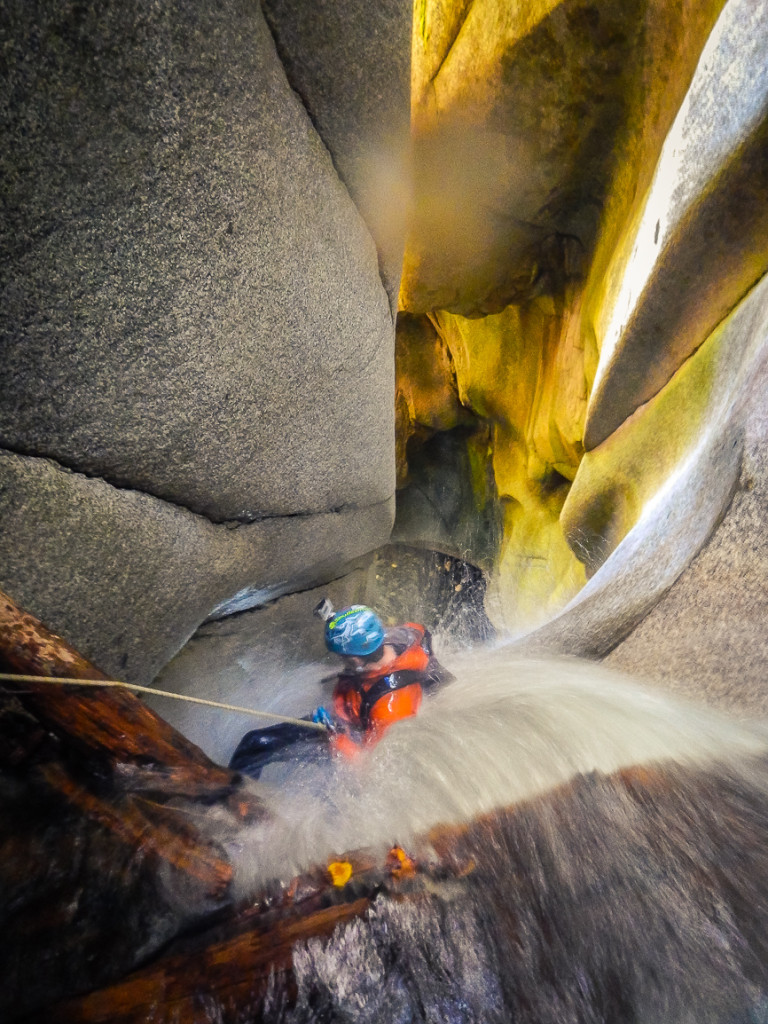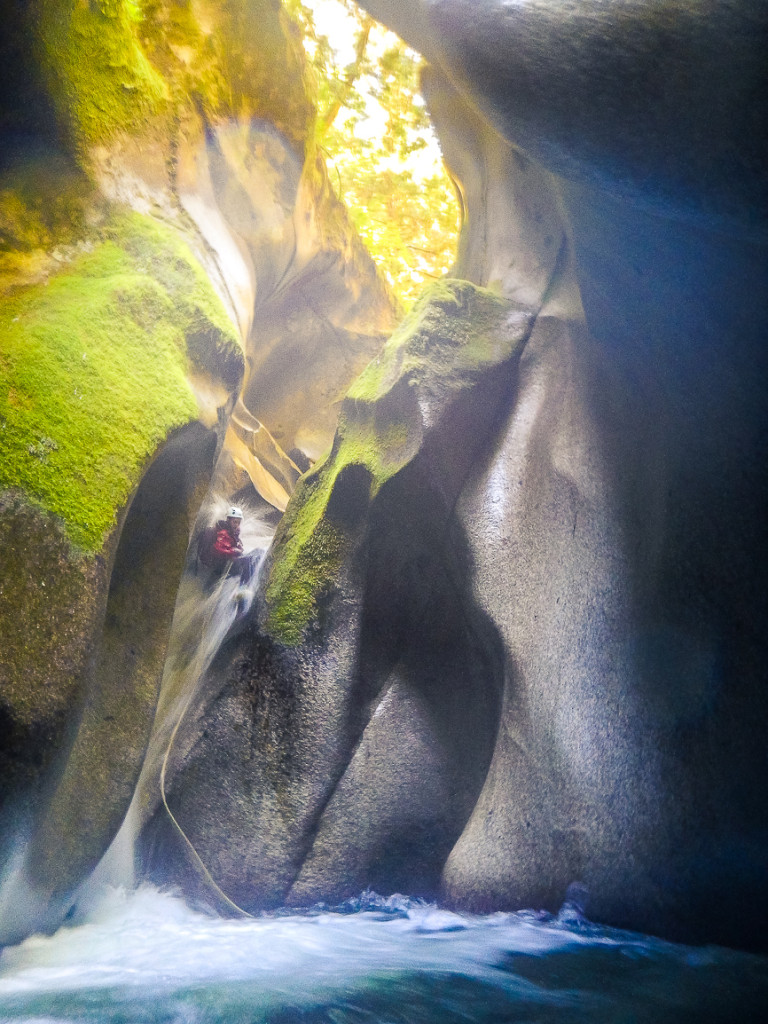Geological Wonders of The Great Wilderness
These awe-inspiring landscapes are more than fascinating natural wonders. They hold wisdom that helps us find our place in the world.

Have you ever been somewhere where you felt the sensation that you truly do not belong and yet you feel utterly compelled to stay? This is exactly how we felt during our first experiences with canyoneering in southwest British Columbia. The otherworldly beauty surrounding you in the canyons invites you to linger, yet the roar of cold rushing water carving its way through solid rock reminds you that you can only visit this place momentarily.

A long rappel section in Monmouth Canyon. Photo: Leigh McClurg
But what is exactly is canyoneering? It is travelling in canyons that can include walking, scrambling, swimming, jumping and rappelling. Basically it is a technical descent of a canyon with the use of ropes, helmets, harnesses and wetsuits. The emphasis is usually on aesthetics rather than pure difficulty, so it can be enjoyed by people of all ages or abilities. It is a sport people engage in the world over and you can canyoneer in both wet or dry canyons. Here in beautiful British Columbia we are blessed with plenty of precipitation and enjoy canyons of the wet variety.

Beautiful sculpted granite walls in Box Canyon. Photo: Spring McClurg
Initially our interest was piqued when we saw a video of the first descent of a canyon right here in Squamish‘s Monmouth Canyon. Before watching this, we didn’t even know this was an activity that existed, let alone one that we could potentially get involved in. But with voracious appetites for adventure we immediately started researching how we could try it. It just so happens that there is an amazing community of people in this part of British Columbia called the BC Canyoneers, who were (and are) willing to share their passion and skills with new people.
BC is a special place for this activity as not only is the climate temperate enough to extend the season well past summer, but there is still so much left to discover. Only a small portion of canyons have seen first descents in southwest BC, reaching from Squamish all the way to Mission. The lush rainforest and rugged nature lends well to an activity that at its heart is about exploration.

Taking a break to enjoy the surroundings in Box Canyon. Photo: Leigh McClurg
Prior to our first canyoneering trip we had just started getting involved in rock climbing; both use the same systems, ropes, helmets and harnesses so we felt confident that our new found skills would be transferable to this new sport. After all, we had rappelled many times during our climbing sessions at the crags, surely this couldn’t be much different? But the one thing we did not account for was the surroundings. It’s difficult to put into words just how overwhelmingly exhilarating our first experience was.

Feels like we are on another planet in Box Canyon. Photo: Leigh McClurg
Every one of our senses was triggered – from the smell of the wet moss and damp stone, the sensation of icy water rushing into your wetsuit, the sight of sculpted rock that was once a solid block but due to the persistence of water has been worn down into a twisting maze of tunnels and drops, to the sound of roaring water all around us. It was unlike anything else that we had ever experienced before and we knew we were hooked.

Fully immersed in the surroundings in Box Canyon. Photo: Spring McClurg
Everyone should be able to enjoy experiences like this and there is nothing stopping you from having one of the most exciting adventures of your life. Just remember that this is a sport that demands your full attention, a sense of adventure and confidence in wild environments. It requires a basic knowledge of rope systems, the ability to rappel and being comfortable swimming in cold water.
Remember to respect the terrain, environment, and other users while you are exploring a cave or canyon. Ensure that you carry proper, reliable equipment and know how to use it safely. Explore within your physical/mental ability and limitations, stick to established underground routes, and practice the explorers motto: “Take nothing but pictures, kill nothing but time, leave no trace.” AdventureSmart and Leave No Trace are great resources to help you get informed before heading outdoors, and regardless of your experience level, never go canyoneering alone and always leave a Trip Plan!
Where to go:
Don’t forget: